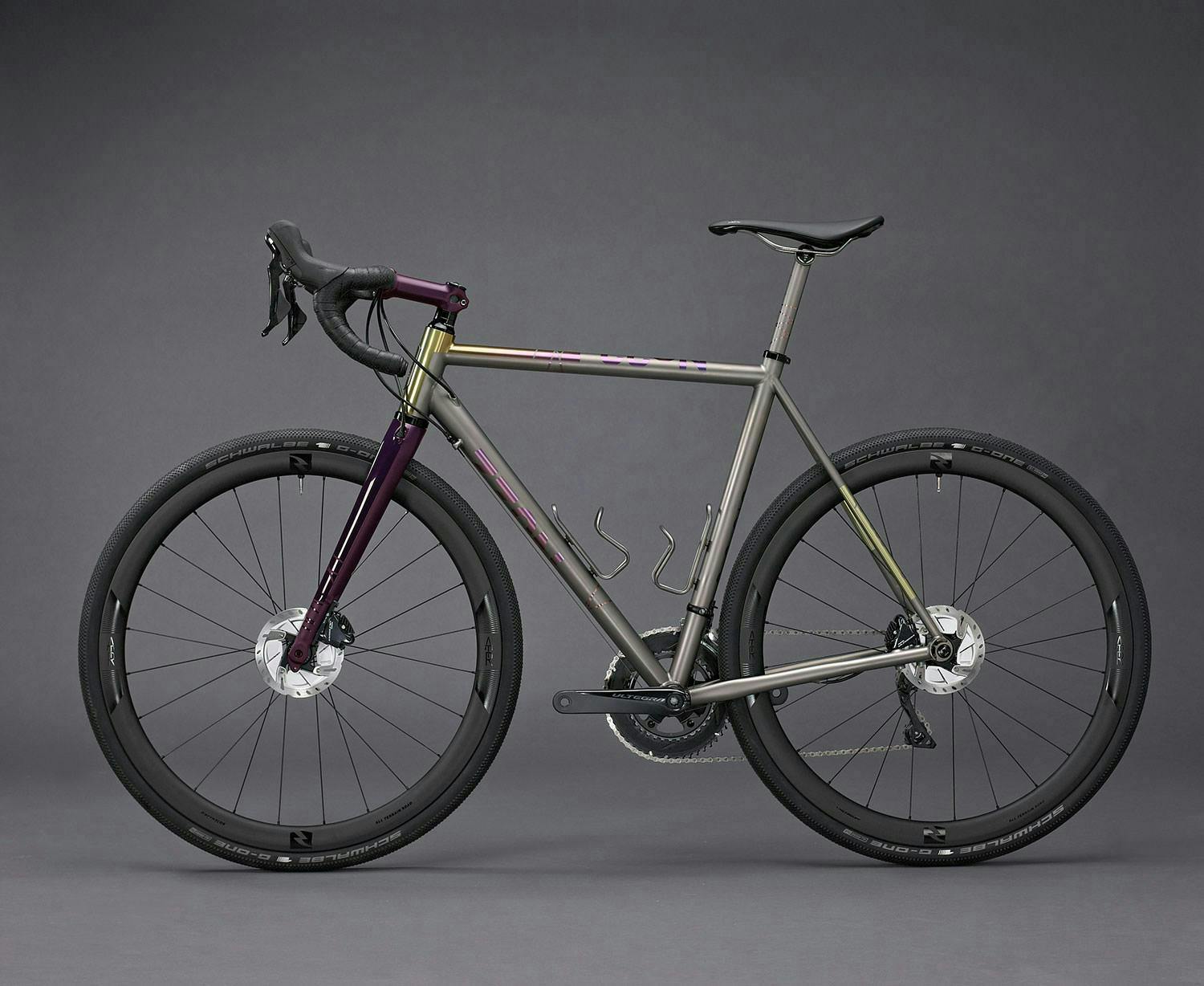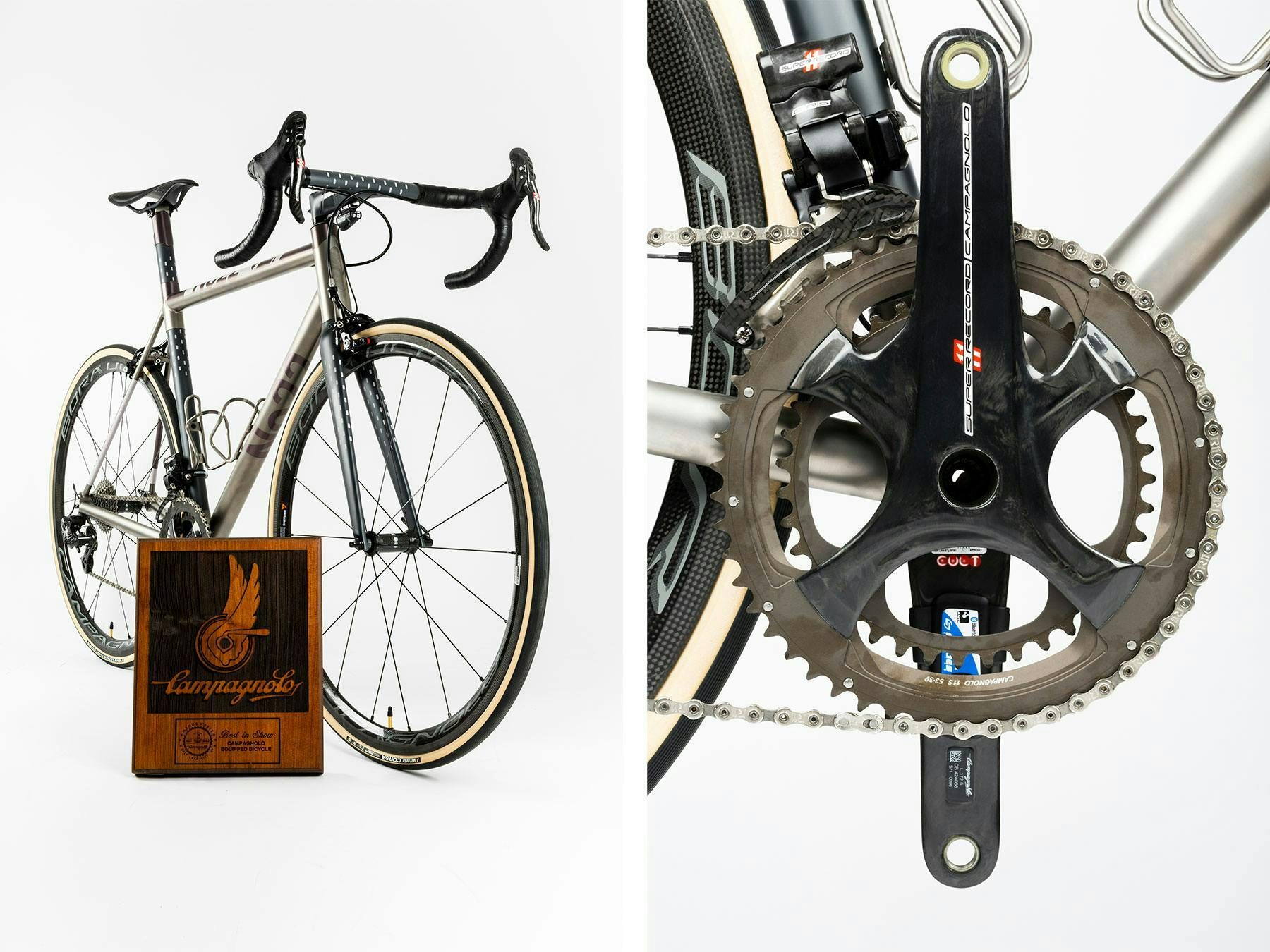Building Success: The No. 22 Bicycle Company
Words: Pete Harrington
Photos: No. 22 Bicycle Company
Ian is temporarily mystified. “It’s just so complex,” he explains, shrugging with resignation at the layers of paper patterns sat crumpled and drawn on the work table in front of him. “It’s amazing that anything gets made. It honestly amazes me that anything gets made in the apparel business.” If you’re tasked daily with doing a million necessary things to put out exceptional bike gear, it’s perhaps understandable that at times, like 7mesh’s VP of R&D, you feel momentarily struck by the sheer impossibility of it all.
It turns out, making other things in the two-wheeled world is equally challenging – like building a company to make titanium bikes, for example. “We launched the brand in late 2011 or early 2012,” says Mike, one half of Canadian bike brand 22 Bicycle Company, calling in with his business partner Bryce over Skype one sunny morning in early June. “A lot of titanium bikes, especially back then, drew heavily on the old cliches of a skinny-tubed, comfort-oriented feel. So we thought about making a performance oriented bike that had modern levels of stiffness and a ride quality that carbon has a harder time delivering.”
Having started off getting their designs built by others, Mike and Bryce began looking to hone and customise the bikes themselves as their ideas for the brand started to solidify. “The contract frame builders that we were working with pushed back on that, so we started looking around for someone else to build for us,” explains Bryce. “I’m an architect by trade, so the process was very familiar to me in that you do the drawings – blueprints so to speak – and somebody else executes it. You make sure everything is in line with the tolerances it’s supposed to be. In hindsight, my training and experience in architecture helped with that side of things.”
Deciding to switch from their existing manufacturer to Saratoga Frameworks, a new, private equity-backed company formed out of the Serotta Company that had recently opened its doors to do contract frame building, Mike and Bryce had them produce two new prototypes of their flagship Great Divide model. “They were phenomenal,” enthuses Bryce, “exactly the level of quality we were looking for.”
Then things went south.
“We put down the deposit on the production run, and the next week, Saratoga Frameworks was no more.”
Why Saragota shut down so soon after launch is unclear, but however it played out, Mike and Bryce had a big decision to make. “We needed bikes, and these guys, who had this incredible legacy of frame building, needed jobs. We didn’t want them to fall into the ether, so we took the step open our own factory. We had to go to where the talent was, and within a few weeks, we were setting up our facility in Johnstown, New York, close to Saratoga Springs where all those guys were based.”

No-one could accuse No22 of going the easy route, off-shoring their production, slapping stickers to stock frames and calling it good. But business decisions aside, titanium remains famously hard to work. “It’s especially difficult to build at the high level we’re aiming at,” says Mike. “You can’t just find someone to come in off the street or from another position to do that. Thankfully, the talent pool of the ex-Saragota people allowed us to build our business. They are 100% why we are still here today.”
Mike first found bikes through friends, building dirt jumps and cruising downtown Toronto to ride its deserted stairs and sparsely peopled streets after the work crowd had run for home. Parts were expensive, so he started working in bike shops, falling in love with racing and the industry at the same time. Then in 2008, Mike met Bryce, a recent arrival from Calgary. “I got my Masters degree in Architecture, and took the last bit of scholarship money I had to build up a bike,” says Bryce. “I had it ready to go as soon as I finished defending my thesis project, and jumped right back into it after that.” A couple of years later, Mike had trained as a lawyer, and Bryce had bounced back to Toronto after the post-Lehman financial slump curtailed a new career in London. Back in the same place and now fuelled with thoughts of starting No22, it wasn’t long before the duo rolled back sleeves to bring their ideas to life.
Everybody in the industry goes, but showing a bike at the North American Handmade Bicycle Show is pretty much a huge hassle. And in 2017, with the Toronto International and the North American shows separated by just four days and nearly 2,000 miles, it would take an extraordinary effort to make both events. But, nerve-wracking customs clearances and logistics issues aside, Mike and Bryce knew that with their race-orientated Reactor model, they had something special. Their faith was rewarded when Bryce’s Velocolour-painted No22 Reactor won 1st place in the Campagnolo Best In Show category at NAHBS. “I’m the ultimate Campy fanboy!” exclaims Bryce, laughing at the memory. “The guy that got me into cycling made it clear that Super Record is the groupset. I stand alone on that with my team here, but given that the bike we entered was also my bike, it meant a lot personally. I’m staring at the placard in my living room right now as a matter of fact.” Which must be a nice pick-me-up on days when you have doubts about yourself? “Sure, or if you’re having a really down day, you might wonder about its market value,” he quips.

And why buy a No22? It’s a reasonable question in a market where the customer does not lack for options. Bryce takes up the call: “We’re trying to lay down the best product with the best value proposition around. A lot of the things that we include as standard features, like a fully butted tube set and the T47 bottom bracket, we put on our bikes because we want to offer value, irrespective of the price point, which frankly, is what it is with titanium milled, worked and welded up right here in the US. Our approach contrasts with the base level model that a lot of bike brands employ: here’s what it could be if you spent this much more money on it, here’s all the extras you need, and here’s the bill – you’ll need a chair for this one, which incidentally, is also on the bill. That’s not us; we don’t want to complicate things.”
For all that, Mike and Bryce feel that like-minded brands working the same vein are only a good thing for bike sales. “It’s super inspiring how many great people are building in this space right now,” says Mike. “And while technically we’re competing with other brands, when one of us does well, all of us do well. Our best advertising is someone riding a modern, well-built titanium bike. So when Moots sells a lot of bikes, we like to see that. Yesterday I was at one of our dealers, and they had an Eriksen there, and I’d been remarking to Bryce that it was phenomenally built, really well done. I think it’s awesome to see so much innovation and creativity in this tiny little sliver of the market that we have and there’s a real deep well of inspiration from other builders that are doing stuff, too. It’s fun, it kind of forces us all to raise our game.”
